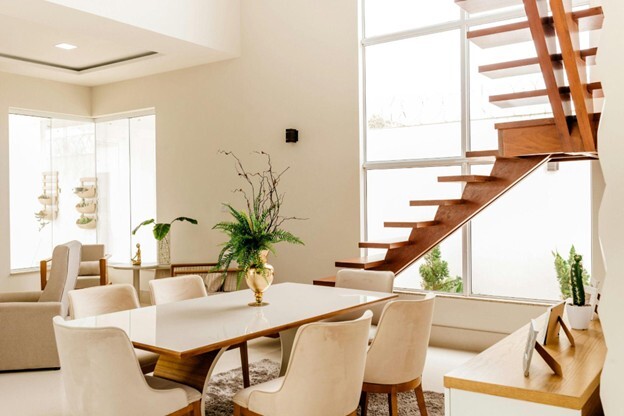Home is where your nervous system recalibrates. It’s where you come back to yourself after the world takes its toll. But when the space around you becomes cluttered, dim, or off-balance, that calm begins to fray. The air feels heavier. The edges feel sharper. Comfort slips. The right adjustments—visual, spatial, sensory—can shift all of that and bring the space back into alignment with how you want to feel in it. To truly transform your space, every successful home upgrade starts with a strategic design and engineering plan.
Expand Your Living Space with Confidence
Sometimes, true comfort doesn’t come from rearranging what you already have—it comes from building what’s missing. Whether it’s a sunroom, a second bathroom, or an expanded kitchen footprint, a thoughtfully designed addition can create space not just for people, but for breath. More room to gather. More quiet corners. More possibility. But additions require more than vision—they need structure, permits, and experienced guidance. That’s where Beryl Engineering & Inspection comes in. They handle planning, design, and engineering with the kind of precision that keeps your project smooth from blueprint to build. If expansion is part of your peace plan, make sure the path is clear.
Digital Organization for Renovation Projects
Even the best home upgrade can lose steam if your digital life is a mess. From contractor estimates to appliance receipts to scanned measurements—you need one place for all the pieces to live. Instead of bouncing between random folders and screenshots, consider building a simple master file where you can store everything. And when you need to update those documents, knowing how to add pages to PDF quickly and cleanly can keep your momentum intact. You don’t need to be a document wizard—you just need to keep your decisions visible, editable, and sharable. That’s how home improvements move from idea to implementation without derailing in the inbox.
Mood-Boosting Greenery
It’s not decor. It’s medicine. A few well-placed plants can do more than fill a corner—they can shift the chemistry of a room. The presence of greenery has been shown to lower cortisol and soften mental tension, especially when integrated into spaces where your mind is already overstimulated. Think: next to your workspace, not your TV. Choose low-maintenance varieties like snake plants or pothos and make the ritual of watering them part of your weekly unwind. There’s solid science behind this: indoor plants lower stress, especially in colder months when outdoor time is limited. It’s less about aesthetics and more about oxygen, visual calm, and micro-moments of connection with living things.
Keeping Your HVAC System Efficient
Comfort isn’t just visual—it’s thermal. If your air feels off, your entire house does too. A draft in winter or a hot pocket in summer isn’t just annoying; it’s a sign your system may be underperforming or imbalanced. That doesn’t always mean you need a full replacement. Sometimes, updating the various types of HVAC parts—like filters, capacitors, or sensors—is enough to restore balance and cut monthly energy waste. Think of your HVAC system like your nervous system: subtle tweaks can have wide-reaching effects. Schedule a seasonal tune-up and pay attention to performance shifts after component replacements. Small parts. Big comfort.
Using Layered Lighting in Your Home
Overhead lighting is the beige carpet of illumination: technically functional, spiritually void. To reset the mood of your space, rethink your lighting in layers. A single overhead bulb shouts. Lamps, sconces, and warm LEDs speak in whispers. Try combining ambient, task, and accent lighting—each at a different intensity and height. This adds depth, reduces eye strain, and makes your rooms feel like they were actually designed for humans. According to design experts, using layered lighting in your home creates emotional warmth and visual texture that single-source lighting can’t replicate. Swap bulbs for warmer temperatures, ditch the sterile white, and let each room glow in gradients.
Choosing Calming Bedroom Paint Colors
Your bedroom is where you reset. It should feel like an exhale, not a storage unit. One of the most overlooked upgrades you can make? Color. Swap bold patterns or dark tones for warm neutrals and low-saturation palettes—taupe, soft sage, dusty rose, or oatmeal beige. These colors don’t just look calm—they feel calm. And when they’re paired with soft textures like quilted throws and layered drapes, the entire space becomes a nest. Studies on interior psychology point to the power of choosing calming bedroom paint colors as a lever for improving both restfulness and mood regulation. If your walls could speak, what would they say back to you?
Homes drift. That’s what they do. But comfort can be reclaimed with a few thoughtful moves—plant a corner, quiet the lighting, make space where there wasn’t enough. These aren’t upgrades for show. They’re upgrades for how you feel at 7AM, or 9PM, or when the whole day’s worn you thin. You don’t need a perfect house. You just need one that works with you, not against you. Start small. Then keep going. Contact Beryl Engineering & Inspection to help you plan your next home upgrade, from initial design concepts to the final engineering assessment.
Discover unparalleled structural engineering and inspection services with Beryl Engineering & Inspection, where your safety and satisfaction are our top priorities. Visit us today to learn how we can support your next project!
By Michael Longsdon



